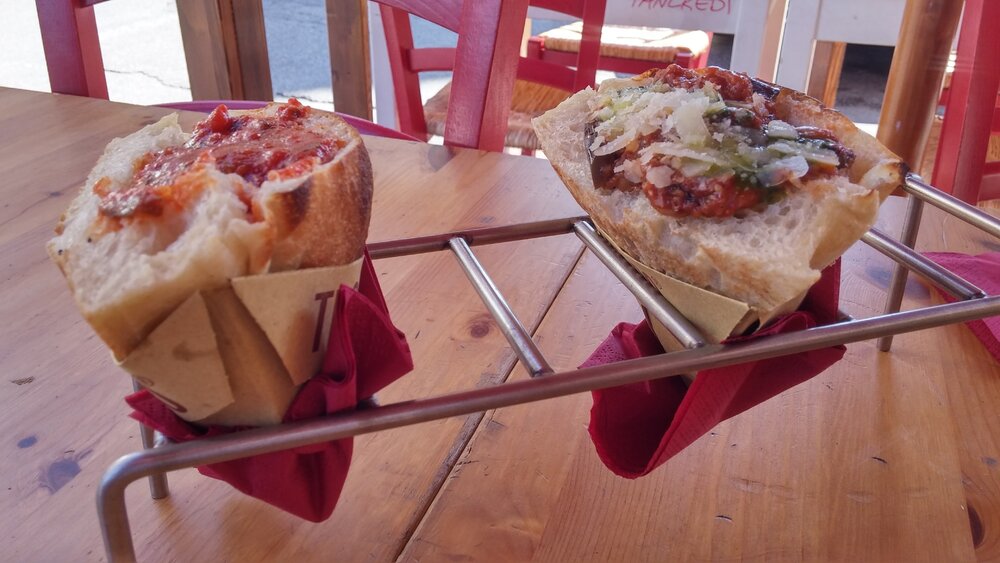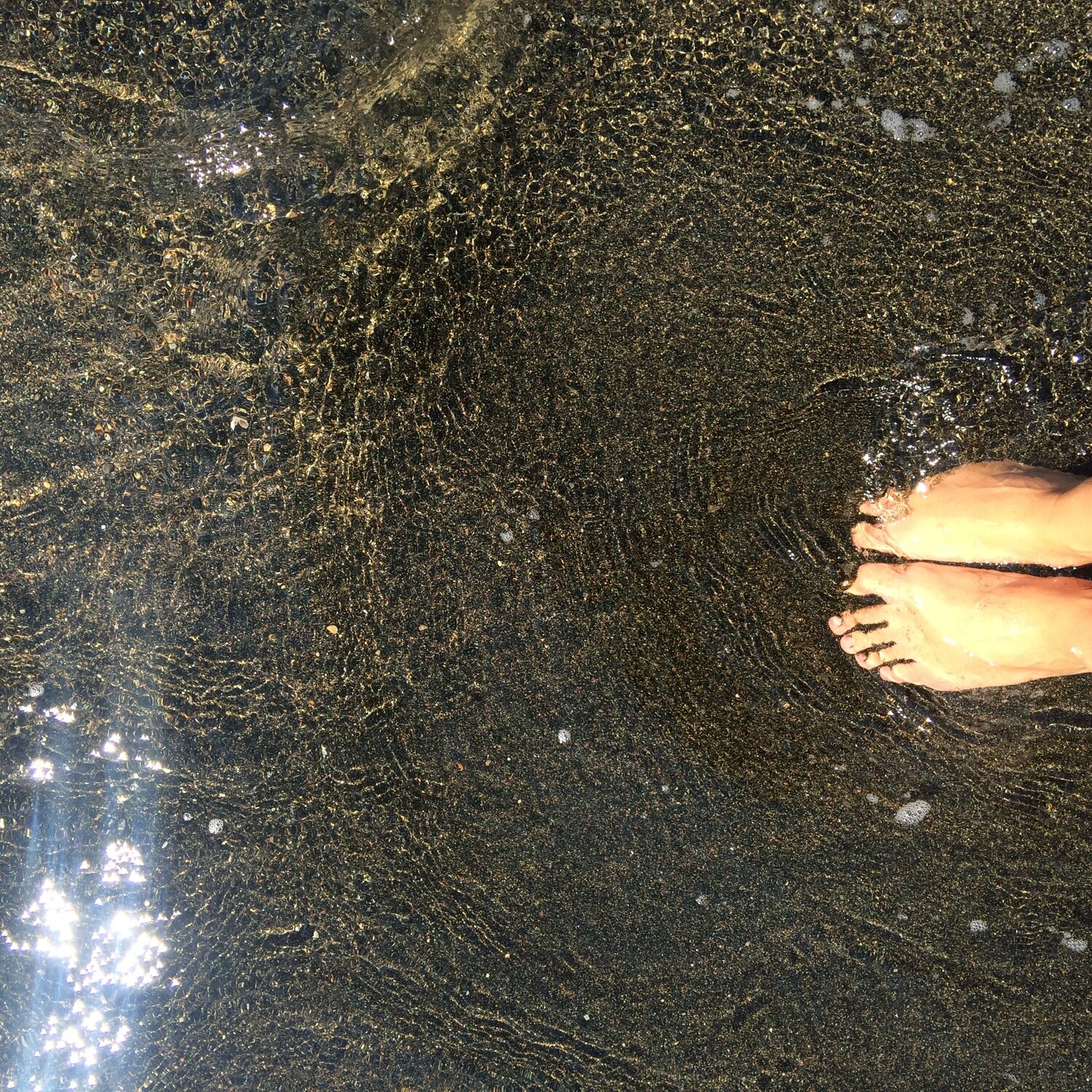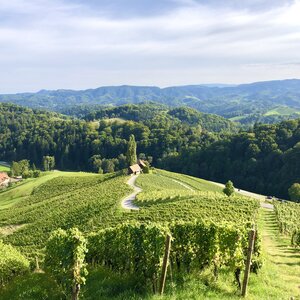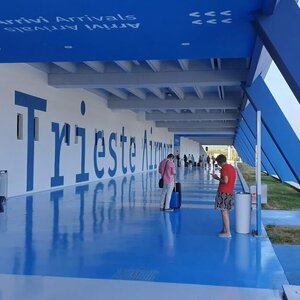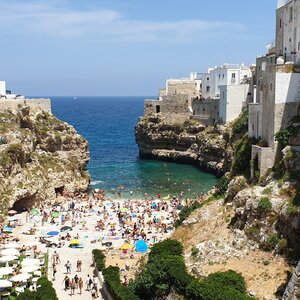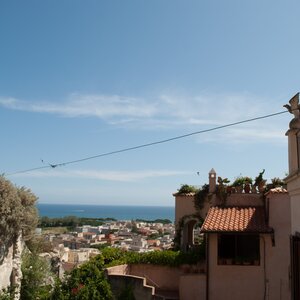The small town of Ladispoli (Ladispoli, emphasis on the second syllable) is unremarkable: there are no big names in its history, no attractions, no popular or expensive resorts. Ladispoli can offer tourists only three advantages: proximity to Rome, annual artichoke festival and black sand unique for this coast. It was for the sake of this phenomenon that we traveled 100 km away from our Nettuno, spending more than 2 hours one way. Many people come here from Rome for a couple of hours for the beach, someone on the contrary, stays in Ladispoli and periodically goes to Rome, but those who come to the beach of Ladispoli from the beach Nettuno, probably do not meet here very often. But someone had an unbearable desire to look at the black sand. See what happened in our video report.
Only 15 minutes along the shady Viale Italia separated the train station from the sea. In a straight line we came to an area of paid beaches with a tiny free piece. Unlike Nettuno, these are all fenced off with white picket fences that go straight into the water, so don’t allow you to walk along the shore along the surf’s edge. The free town beaches, according to eyewitness accounts, are on the outskirts of town, but we didn’t get to them.
The black sand heats up in the sun — it’s not just hot, it’s scalding. You can walk barefoot only near the water’s edge, where it is refreshed by the sea. It is said that lying on this sun-heated sand has a special therapeutic effect.
In reality, it turned out that the sand is not quite black, but rather dark gray, and the admixture of ordinary yellow sand gives small golden sparks, which can be seen only in the sunlight — you can see it a little on the top photo. For Russians accustomed to black earth fields or coal mountains this view is not so impressive — our people are more impressed by white Maldivian sands.
The water is crystal clear, the heavy ferruginous sand does not create sandy suspension. There were few people on the beach on a weekday in September.
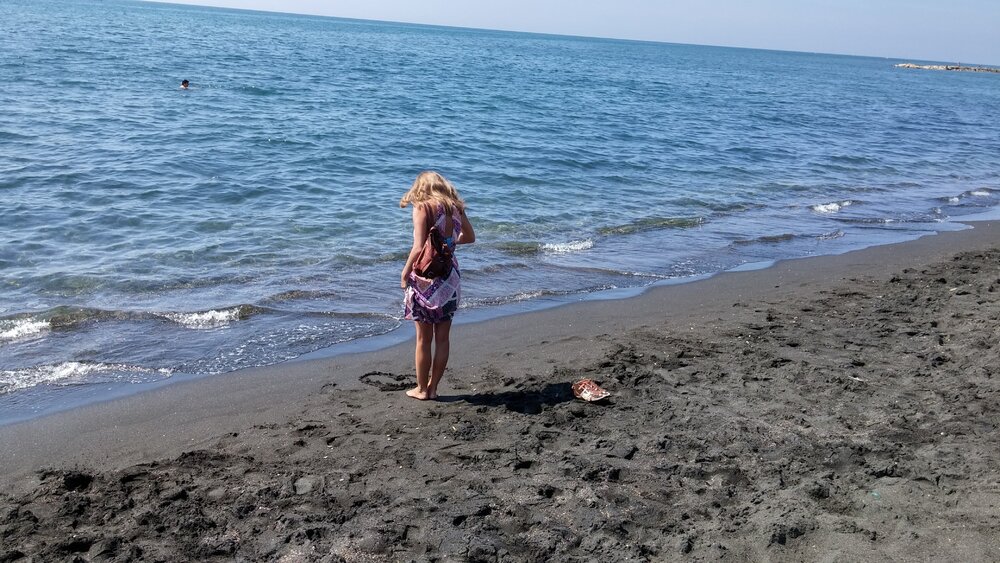
History and attractions of Ladispoli
Little is known about the history of the city. It was once the site of the Etruscan port of Alsium and a Roman colony in the time of Cicero. With the advent of Roman rule, the place gradually fell into disrepair until the Middle Ages, when it was rediscovered by the Roman nobility, who came here to rest. The town got its modern name from its founder, Prince Ladislao Odescalki, who bought the Palo Castle in the late 18th century. The castle and village served as a vacation spot for the aristocracy, and later became the residence of cardinals and popes.
The city’s tourism website invites visitors to explore several historic sites.
Palo beach (La spiaggia di Palo)
Along the beach that connects Palo to Ladispoli, Roman and Etruscan buildings can be found. Most of them are only ruins, but there are traces of wooden supports, trenches and fragments of Etruscan and Roman pottery.
La Villa Romana di Marina di Palo (The Roman Villa of Marina di Palo)
Leaving behind the World War II bunker, at the borders of the modern town on the beach of Marina di Palo you will see the remains of a burial vault (most likely belonging to the Erenni family) and a little further away the surroundings of a magnificent Roman villa. This is the Villa romana di Marina di Palo. Its ruins were discovered by the archaeologist Luigi Tocco in 1867. The rooms of this large seaside villa have been preserved.
Right in the center of Ladispoli, between via Nervi and via Rapallo, near the elementary school «Don Giovanni Bosco», other archaeological evidence of the Roman Empire has been preserved.
La Villa di Pompeo (The Villa of Pompeo)
Starting from the southern border of Marina di San Nicola, between Cupino and the beach, are the ruins of Pompey’s huge seaside villa, which covered 5 hectares. At the top of the building, it is noticeable that there was once a large garden surrounded by a covered corridor, which still retains traces of the colonnade and mosaic floors.
La Posta Vecchia
Posta Vecchia is a 17th century inn. The magnificent building is surrounded on three sides by a beautiful Italian garden, with the fourth side facing the sea. Today the building is a hotel.
In the gardens of Posta Vecchia, in addition to an open courtyard with marble slabs on the walls, a cistern for collecting rainwater, and other offices, there are the ruins of a small Roman house. It is believed to be the oldest house in Ladispoli, supposedly belonging to the ancient village of Alsium.
Castello Odescalchi (Odescalchi Castle)
The castle dates back to 1132, when several watchtowers were built to protect the coast from enemy invasions. The castle, which over the centuries has served as the residence of important persons (including Francesco Orsini, Pope Alexander VI, Happy Orsinidella Rovere Day, Cardinal Alessandro Farnese, Pope Sisto V, in Cardinali Flavio and Virgilio Orsini, Livio Odescalchi, Pope Innocent XII, Duke Griglio of Genoa), was built in the fourteenth century by Orsini, purchased by Prince Ladislao Odescalchi, and is now owned by his descendants. The town of Palo was formed around it, from which Ladispoli grew.
Flavia Tower (Torre Flavia)
The most famous monument and one of the most in need of restoration, the Torre Flavia, has always been a symbol of the city. The Flavia Tower, which was on land, was part of a defensive system that stretched along the entire coast and included the tower of Pal Castle, the towers of Santa Severa Saracen, the towers of Odescalchi Castle, S. Marinella. Torre Flavia was used as a watchtower until the early 19th century. At low tide, the ruins of Roman walls can be seen near the tower.
Necropolis and Roman Cistern (Piane di Vaccina)
In the new residential area «Miami», on a small hill overlooking the valley, between via Luisiana and via Florida, the structures of a large Roman cistern, which probably belonged to a country house, have been preserved. Next to the cistern, other structures dating to the 5th century AD were found, probably belonging to Germanic settlers (possibly King Theodoric’s Ostrogoths) who settled in the Roman villa. Downstream of the keep are the ruins of a Roman bridge and a Roman cobbled road. There are also the ruins of an Etruscan necropolis with about 60 crypts from the 7th to 6th centuries BC.
Castellaccio in Monteroni
The Monteroni site is a large Etruscan necropolis from the 6th to 5th century BC. During the Roman period the necropolis continued to be used. The ancient Via Aurelia passed through here, and for centuries pilgrims, couriers and travelers stopped here in Castellaccio. During the work of widening the road in the 90s, archaeologists found the ancient Via Aurelia route and the remains of a magnificent Roman Villa with interesting mosaics (now preserved in the necropolis of Cerveteri).
Ladispoli is one of the few places in Italy where real Mediterranean forests have been preserved. In the vicinity of the town there are two «ecological oases» — nature reserves, which are under the patronage of the international conservation organization WWF. Thanks to the fact that the area has been privately owned by the Odescalchi family for several centuries, it has remained intact: it is one of the last existing Mediterranean forests on the coast. The reserve is open to the public every Sunday from October to May, with guided tours at 10.00 and 14.00.
In modern history, the city was noted for the fact that one of the classics of Italian cinema, Roberto Rossellini, shot several of his films here, for which he was honored to give his name to one of the central squares of the city. For Russian-speaking intelligentsia Ladispoli is known as a camp of political refugees, which in the 1980s-1990s received many emigrants from the USSR. The center of life here then was the square near the fountain. Today, the fountain is overgrown with moss and its pond is home to turtles and carp.
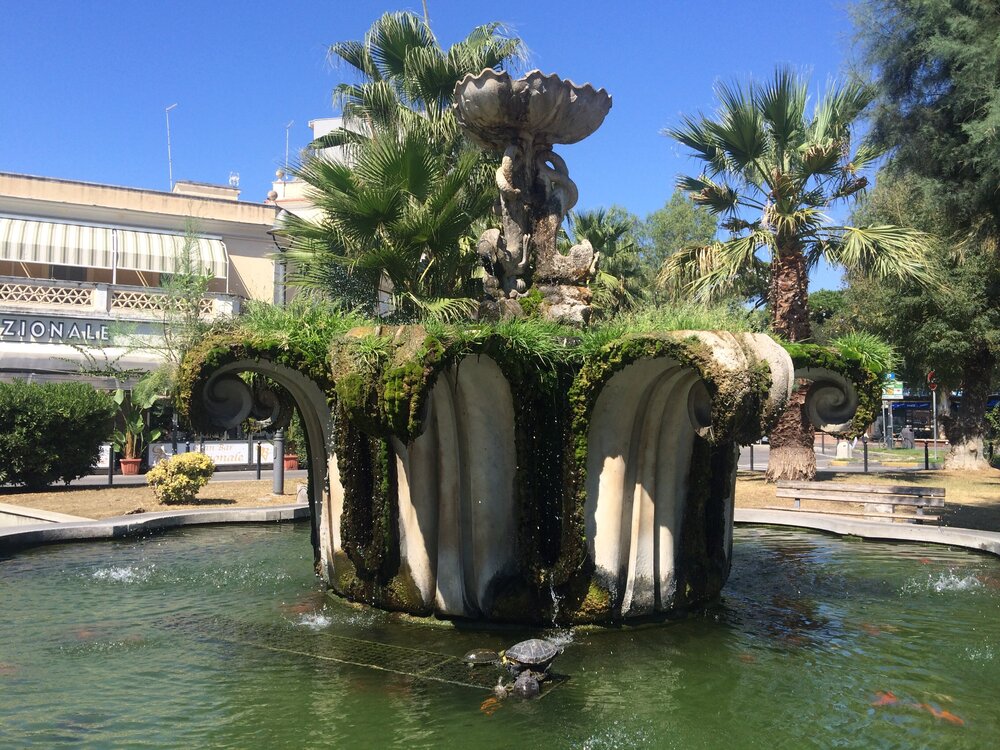
Ladispoli Holidays
When a small Italian town has nothing to attract tourists, the locals use a proven method….. and come up with their own gastronomic festival. That’s how Ladispoli created the Roman Artichoke Festival in 1950, held annually in the second week of April. More information about the festival here, in Italian.
Guides suggest two other holidays when the city hosts celebrations and religious processions:
- March 19 is the day of the city’s patron saint, St. Joseph (San Giuseppe).
- June 24 — St. John the Baptist Day Celebration Procession.
When to go to Ladispoli
Heartless travel agencies are ready to send tourists on beach vacations in Ladispoli as early as April and up to October. In my experience, it is still better to go to the sea near Rome from mid-June to mid-September. In early June the sea will still be cool, in September the weather in Lazio is already unpredictable.
The hottest period in all senses in all Italian resorts is the second half of August, when half of Italy is added to the vacationing tourists, going on vacation for two weeks in honor of Ferragosto.

How to get to Ladispoli from Rome
The easiest way to get to Ladispoli is by train from Rome. The fare costs 3,6 €. The high-speed train takes about 40 minutes, the regular one about an hour. The regular one stops at more stations, so it is slower.
Timetable of trains Rome — Ladispoli
Ladispoli-Cerveteri station is part of the BIRG 4 zone of the ATAC system. This is convenient for those coming to Ladispoli-Cerveteri from outside Rome, like us, and allows you not to buy a separate ticket for each station, but to travel on one ticket and save a little money.
Useful information about Ladispoli
